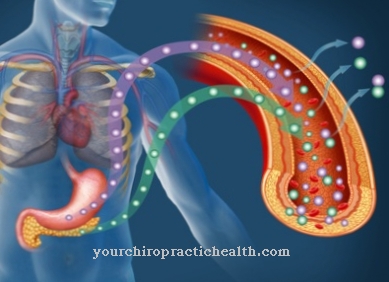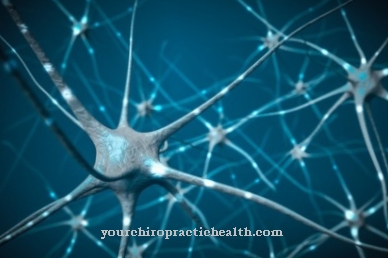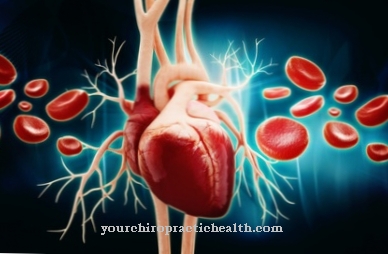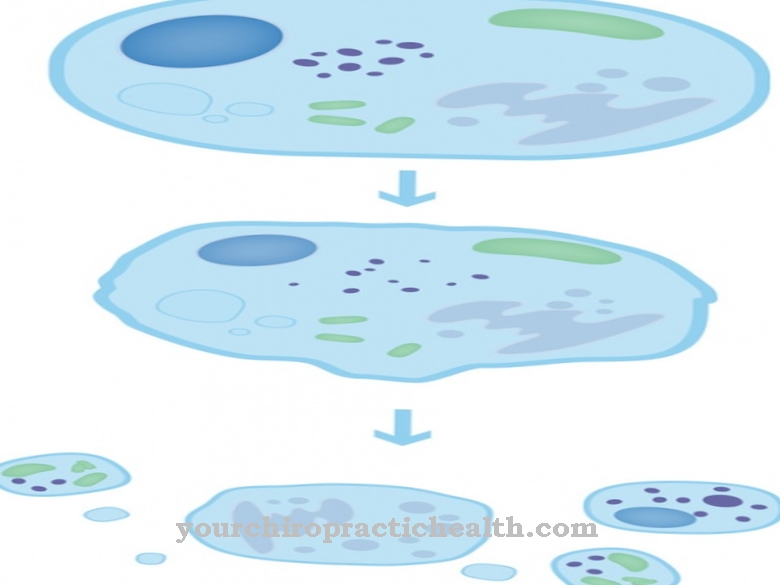The Bite position provides information about the sagittal positional relationship between the lower jaw and the upper jaw. With a neutral bite position, both jaws are in the correct relation to one another.
What is the bite position?

The human jaw consists of an upper jaw (maxilla) and a lower jaw (mandible). The jaws are part of the skull. The lower jaw is a U-shaped bone that is attached to the temporal bone by the temporomandibular joint. Part of the masticatory muscles attach to the front part of the lower jaw bone. The mandibular bone is mobile through the temporomandibular joint.
The maxillary bone is the largest bone in the midface. The upper jawbone is partially hollow. The cavities within the bone are part of the sinuses and are called the maxillary sinuses. In contrast to the lower jaw, the upper jaw is immobile. The teeth are anchored in the sockets of the jawbones.
The interlocking of the upper and lower teeth is called a bite. The bite position, in turn, is a position designation that provides information about how the two jawbones are related to each other. The physiological bite is called a neutral bite or a normal bite. The lower jaw and upper jaw are in a normal positional relationship both to one another and to the entire skull.
Function & task
A normal bite position is a prerequisite for a physiological chewing process. Chewing requires optimal coordination between the jawbone, masticatory muscles, teeth and jaw joints. The chewing function is reflex. The movements required for the chewing process are carried out solely by the lower jaw. The jaw muscles are constantly making quick fine adjustments.
With a normal bite position, the teeth only come into contact with each other when chewing, biting and swallowing. Due to the high pressure during the chewing process, it is important that the teeth are subjected to vertical stress.
The teeth are suspended from collagen fibers in the tooth sockets of the jawbone. The pressure that acts on the tooth while chewing is converted into tensile stress on the bone. With an optimal bite position, chewing stimulates the bone structure in the jawbone. Conversely, the lack of pressure in the case of a malposition can lead to bone loss.
A physiological bite position enables humans to effectively chop up the food they feed and thus prepare it for digestion. The teeth are not only chewing tools, but also speaking tools that are involved in making sounds. A normal bite position enables speaking without hissing, whistling or lisp.
In addition, the dental and jaw apparatus also has a social function. Healthy and straight teeth as well as a straight jaw position are perceived as beautiful and worth striving for and are considered a social figurehead. A corresponding social status is often associated with the condition and position of the teeth.
You can find your medication here
➔ Medication for toothacheIllnesses & ailments
If the upper and lower jaw are in a pathological relationship, one speaks of a wrong bite or a wrong bite position. If the lower jaw is shifted backwards, a distal bite occurs. The distal bite is also known as the lower arch. Seen from the front, the lower dental arch is then behind the upper dental arch. The distal bite is also known as a frontal overbite or scissor bite. Popularly one speaks of buck teeth or a receding chin.
The opposite of the distal bite is the so-called mesial bite. The upper incisors protrude here, creating a frontal overbite. Lower incisors that bite in front of the upper incisors form an undershot. The misalignment of teeth is divided into angle classes. Distal bites belong to class II, mesial bites to class III.
The causes of misaligned teeth and jaws are diverse. The abnormalities are often inherited, for example in connection with a cleft lip and palate. Hormonal causes are also conceivable. For example, acromegaly can result in a change in the bite position. In acromegaly, the growth hormone somatotropin is increased. Among other things, there is bony growth in the chin area.
Misaligned teeth can also be acquired. Constant finger sucking or the pacifier in small children as well as malfunctions during the swallowing process can lead to a changed bite position. Infectious diseases or a chronic vitamin deficiency are also conceivable causes of a pathological bite position.
Even small misalignments of the jawbone can cause considerable impairment. The incorrect positional relationship leads to incorrect loading of the teeth, the jawbone and the masticatory muscles.
Great forces arise when chewing. The chewing pressure in humans is 20-30Kp / cm² when chopping food. With a normal bite position, the pressure is evenly distributed. This optimal pressure distribution is no longer guaranteed in the case of an over or over bite. The constant overuse of certain areas of the jaw can lead to a clamp. With this, the mouth can no longer be fully opened. Locking the jaw as a result of an incorrect bite position is also conceivable. A jaw lock prevents the mouth from closing.
Facial pain, headaches, and back pain can all be caused by a misaligned jaw. Due to the malfunction of the jaw, the chewing and facial muscles tense. The neck muscles are also tensed. It is not uncommon for the cause of a migraine to be in the jaw area.
The teeth are also affected by the uneven distribution of pressure. Teeth may die prematurely or fall out. Perhaps the pathological bite position even manifests itself in digestive problems. If it is not possible to bite and chew properly due to the misalignment, the food will not be chopped sufficiently. This can lead to gastrointestinal problems. If the mouth cannot be closed properly due to the bite position, breathing usually takes place through the mouth. Dry mucous membranes and an increased susceptibility to infection are the result. Depending on the bite situation, speech disorders can also occur.

























.jpg)

.jpg)
